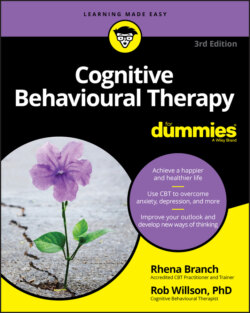Читать книгу Cognitive Behavioural Therapy For Dummies - Rob Willson - Страница 46
Designing and Conducting Behavioural Experiments
ОглавлениеIN THIS CHAPTER
Testing out your thoughts and assumptions as predictions
Exploring theories and gathering information
Designing and recording your experiments
Often, CBT can seem like common sense. Behavioural experiments are particularly good examples of the common-sense side of CBT. If you want to know whether your hunch about reality is accurate, or your way of looking at something is helpful, put it to a test in reality.
This chapter is an introduction to behavioural experiments, a key CBT strategy. We include in this chapter an overview of several behavioural experiments that you can try out for yourself. We also give you examples of these experiments in action. As with the other examples we use in this book, try to look for anything useful you can draw from them. Try not to home in too much on how the examples differ from your specific problem. Instead, focus on what you have in common with the examples and work from there to apply the techniques to your own problems.
Even in a ‘talking treatment’ like CBT, actions speak louder than words. Aaron Beck, founder of cognitive therapy, encourages a therapeutic perspective where client and therapist work on ‘being scientific together’. Beck emphasises that testing your thoughts in reality, rather than simply talking about them, underpins effective therapy.
